Great choice! Your favorites are temporarily saved for this session. Sign in to save them permanently, access them on any device, and receive relevant alerts.
- Sailboat Guide

Pearson Ensign

Pearson Ensign is a 22 ′ 6 ″ / 6.9 m monohull sailboat designed by Carl Alberg and built by Pearson Yachts between 1962 and 1982.

Rig and Sails
Auxilary power, accomodations, calculations.
The theoretical maximum speed that a displacement hull can move efficiently through the water is determined by it's waterline length and displacement. It may be unable to reach this speed if the boat is underpowered or heavily loaded, though it may exceed this speed given enough power. Read more.
Classic hull speed formula:
Hull Speed = 1.34 x √LWL
Max Speed/Length ratio = 8.26 ÷ Displacement/Length ratio .311 Hull Speed = Max Speed/Length ratio x √LWL
Sail Area / Displacement Ratio
A measure of the power of the sails relative to the weight of the boat. The higher the number, the higher the performance, but the harder the boat will be to handle. This ratio is a "non-dimensional" value that facilitates comparisons between boats of different types and sizes. Read more.
SA/D = SA ÷ (D ÷ 64) 2/3
- SA : Sail area in square feet, derived by adding the mainsail area to 100% of the foretriangle area (the lateral area above the deck between the mast and the forestay).
- D : Displacement in pounds.
Ballast / Displacement Ratio
A measure of the stability of a boat's hull that suggests how well a monohull will stand up to its sails. The ballast displacement ratio indicates how much of the weight of a boat is placed for maximum stability against capsizing and is an indicator of stiffness and resistance to capsize.
Ballast / Displacement * 100
Displacement / Length Ratio
A measure of the weight of the boat relative to it's length at the waterline. The higher a boat’s D/L ratio, the more easily it will carry a load and the more comfortable its motion will be. The lower a boat's ratio is, the less power it takes to drive the boat to its nominal hull speed or beyond. Read more.
D/L = (D ÷ 2240) ÷ (0.01 x LWL)³
- D: Displacement of the boat in pounds.
- LWL: Waterline length in feet
Comfort Ratio
This ratio assess how quickly and abruptly a boat’s hull reacts to waves in a significant seaway, these being the elements of a boat’s motion most likely to cause seasickness. Read more.
Comfort ratio = D ÷ (.65 x (.7 LWL + .3 LOA) x Beam 1.33 )
- D: Displacement of the boat in pounds
- LOA: Length overall in feet
- Beam: Width of boat at the widest point in feet
Capsize Screening Formula
This formula attempts to indicate whether a given boat might be too wide and light to readily right itself after being overturned in extreme conditions. Read more.
CSV = Beam ÷ ³√(D / 64)
In 1959 Carl Alberg was commissioned by Pearson Yachts to design a 22-foot cruiser suitable for racing in the Midget Ocean Racing Club (MORC). This was the ELECTRA, which had a masthead rig, a small, self-bailing cockpit, and a cabin with galley space, head and bunks. About 350 ELECTRAS were built over the next six years.
Pearson dealers surmised that prospective Electra buyers might prefer the boat with a larger cockpit and smaller cabin. They passed the information along to Pearson, who subsequently asked Alberg to design a day sailor, suitable for one-design racing, based on the ELECTRA hull.
Other changes made included moving the mast six inches s forward, increasing the area of the mainsail, and reducing the height of the fore triangle.
The ELECTRA DAY SAILOR, as it was first called, was an instant success: 219 were sold in the first year (1962). At this time, the first class racing was organized (Fleet #l, out of Larchmont, New York).
The next year saw 213 more boats built and nine more fleets formed - in Houston, Texas; Hingham, Massachusetts; Providence, Rhode Island; Huntington and Port Washington, New York, Miami, Florida; Gibson Island, Maryland; and Falmouth, Maine. The last known builder (2003) was Ensign Spars Inc. of Dunedin, FL (USA).
Embed this page on your own website by copying and pasting this code.
Discover Related Sailboats

Pearson Electra
- About Sailboat Guide
©2024 Sea Time Tech, LLC
This site is protected by reCAPTCHA and the Google Privacy Policy and Terms of Service apply.
Ensign pearson
The ensign pearson is a 22.5ft fractional sloop designed by carl alberg and built in fiberglass by pearson yachts between 1962 and 1982., 1776 units have been built..
The Ensign pearson is a moderate weight sailboat which is a good performer. It is very stable / stiff and has a good righting capability if capsized. It is best suited as a day-boat.
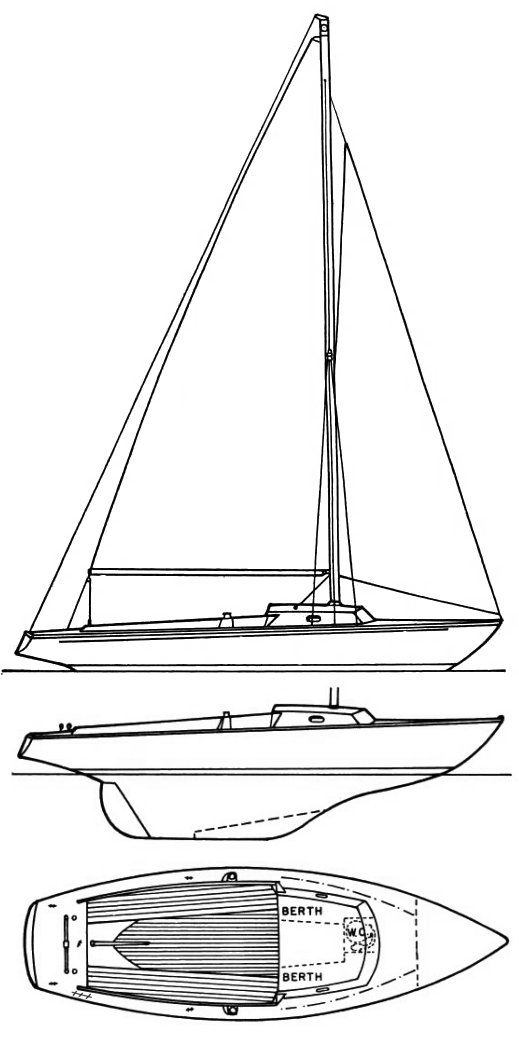
Ensign pearson for sale elsewhere on the web:

Main features
Login or register to personnalize this screen.
You will be able to pin external links of your choice.

See how Sailboatlab works in video

We help you build your own hydraulic steering system - Lecomble & Schmitt
Accommodations
Builder data, modal title.
The content of your modal.
Personalize your sailboat data sheet
Pearson Yachts Portal
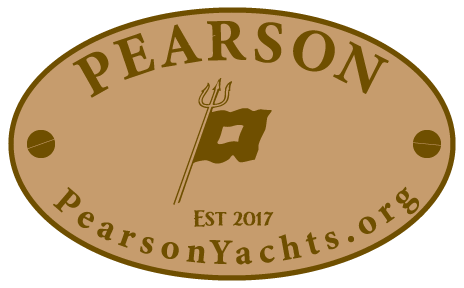
The Pearson Ensign : 1962 – Present

Originally called The Electra Day Sailer , the Ensign is a Carl Alberg design
Time-honored Reliability
The Ensign hull design by Carl Alberg is based on the Pearson Electra . He modified the design for the Ensign in response to customer demand for a day-sailer with a larger cockpit and smaller cabin. Pearson Yachts was the only builder of the boat from 1962-1983 with 1775 boats constructed before ceasing production. Production was resumed in 2001 by Ensign Spars, Inc. of Dunedin Florida, where reportedly another 33 boats, (hull #2000 and above), have been produced as of 2019.
Consider this: The Ensign is the only sailboat from Pearson Yachts that is still in production today — and Pearson has been closed for close to 3 decades. Now isn't that a true test of time!
The Ensign is by far the largest one-design fleet of full-keel sailboats in the country. It was inducted into the American Sailboat Hall of Fame in 2002.
"Consider what has made the Ensign so popular… a large eight foot cockpit with full length teak seats so perfect for the safety and convenience of a large family; a twin-berth cuddy cabin with optional head for those overnights or weekends; national recognition as a one-design racing class; longevity of manufacturer; strict class rules for uniformity; Pearson Quality "! Pearson Yachts Inc.

More than 1700 ENSIGNS are sailing nationwide in a strong, active one-design association numbering 47 fleets in 20 states (1979). Rigid class rules insure continuity of design and manufacture thereby enhancing resale value. Her remarkable ability to race well while providing all the comfort and stability required of a good day-sailer or weekender has endeared here to hundreds of experts and novices everywhere.
Since the class was introduced in 1962, the ENSIGN has proven herself to be the ideal all-around family boat. Her ability, seaworthiness, and forgiving attitude have encouraged numerous people of all ages to "take to the water" for those precious leisure hours while providing those with a competitive spirit with a bonafide compromise between the thrill of racing and the lure of cruising.
Ask many of the experts now racing larger boats and they tell you it all started with the ENSIGN. Ask present ENSIGN owners, they tell you how difficult it is to find another boat that dollar for dollar represents the real value they presently enjoy.
If the ENSIGN will be your first boat, you can start with confidence — confidence in your boat and your investment. If it's your next boat you can rest assured that she will bring out the best of your experience.
Consider what has made the Ensign so popular… a large eight foot cockpit with full length teak seats so perfect for the safety and convenience of a large family; a twin-berth cuddy cabin with optional head for those overnights or weekends; national recognition as a one-design racing class; longevity of manufacturer; strict class rules for uniformity; Pearson Quality!
Pearson Yachts Inc. 1979
Ensign … one design sensation
Pearson Yachts 1961
Pearson Ensign – by the Numbers
Hover on hyperlink for definitions
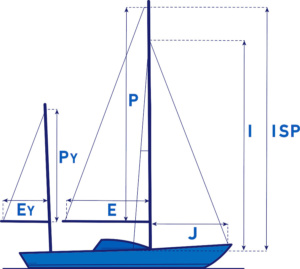
- Construction Detail
Rev 9 - 26-Feb-1992
Standard Equipment
CONSTRUCTION: Hull and deck are integrally molded fiberglass laminate construction (hand lay-up) with bonded bulkheads. Deck is balsa-core fiberglass for strength, rigidity, and insulation. Teak coamings with winch mount areas. Teak seats and cockpit sole.
HARDWARE AND DECK FITTINGS: Chromeplated brass or bronze, stainless steel and special marine alloys. Stainless steel stemhead fittings, backstay and shroud chainplates. Bow cleats with chocks (P &S), stern cleats (P &S). Two fixed ports.
SPARS: MAST: Anodized aluminum 6061-T6 alloy with aluminum spreaders. Rigging fittings of stainless steel and aluminum alloy. Cleats for main, jib and downhaul. Gooseneck track, sail track and gate.
BOOM: Anodized aluminum 6061-T6 alloy with standard gooseneck, slide, topping lift fitting and mainsheet blocks.
STANDING RIGGING: Seven/eighths foretriangle rig (fractional). Stainless steel 1 x 19 construction with swaged tru-loc end fittings. Turnbuckles on all shrouds and stays. Toggles on headstay and shrouds.
RUNNING RIGGING: Main and jib halyards of 7 x 19 stainless steel wire with Dacron tails (spliced). Dacron jib and main sheets. Jib sheet lead blocks and cleats. Main sheet blocks and cleats.
INTERIOR: Provision for two full-length bunks in cuddy cabin.
SAFETY EQUIPMENT: All standing rigging and spars are grounded for lightning protection. Non-skid deck and cabin top.
Pearson Yachts Inc. 1962

Ensign Class Association

The Ensign Class Association was founded in 1962. It is one of the strongest national organizations in the country, with numerous local fleets from coast to coast.
The objectives of the assocation:
- To promote and develop Ensign Class racing under uniform rules.
- To rigidly maintain the one-design features of the Ensign.
- To promote use of the Ensign as a family boat for recreational sailing.
- To educate the public, and particularly the youth, in sailing and sailboat racing.
Features described by the association:
- It's a great looking boat, with classic lines, and a wonderfully large, deep cockpit where passengers feel comfortable, safe, and secure.
- It has a sail plan that achieves hull speed in breezes as low as eight to ten knots, and a full keel that delivers performance when the boat is sailed flat, and forgiveness when allowed to heel.
- It is a strong, durable boat, affordable to buy and easy to sell.
- There are not many designs that get everything so right
- For these reasons, the Ensign, on January 25th, 2002, was the first boat inducted into the American Sailboat Hall of Fame.

Ensign Resources

- Pearson Ensign One-Page Flyer
- Ensign Drawing
- Line Drawing
- Ensign Specifications
- Factory Installed Equipment
- Factory Options

Ensign On The Web
- Class Association - Ensign Class
- Ship's Store - Ensign Class
- Ensign Classic - EnsignSpars.com
- The Pearson Ensign - MainBoats.com Fleet 67
- Ensign Fleet 72 - SailSaratoga.org
- Pearson Ensign - Wikipedia.com
- Restoration of #1484 - Eraser
- Invictus #748 - Ensign Class Story
- The Other Woman - Ensign Class Story
- Ensign Specs - SailBoatData.com
- Pearson Info - dan.pfeiffer.net
- American Sailboat Hall of Fame - Archive.org
Pearson Ensign Brochures
Click to enlarge

Ensign Class Association
Class contact information.
Click below
Class Email
Class Website
One-Design Class Type: Keelboat
Was this boat built to be sailed by youth or adults? Adult
Approximately how many class members do you have? 500
Photo Credit:Spectrum Photo/Gran Grenon
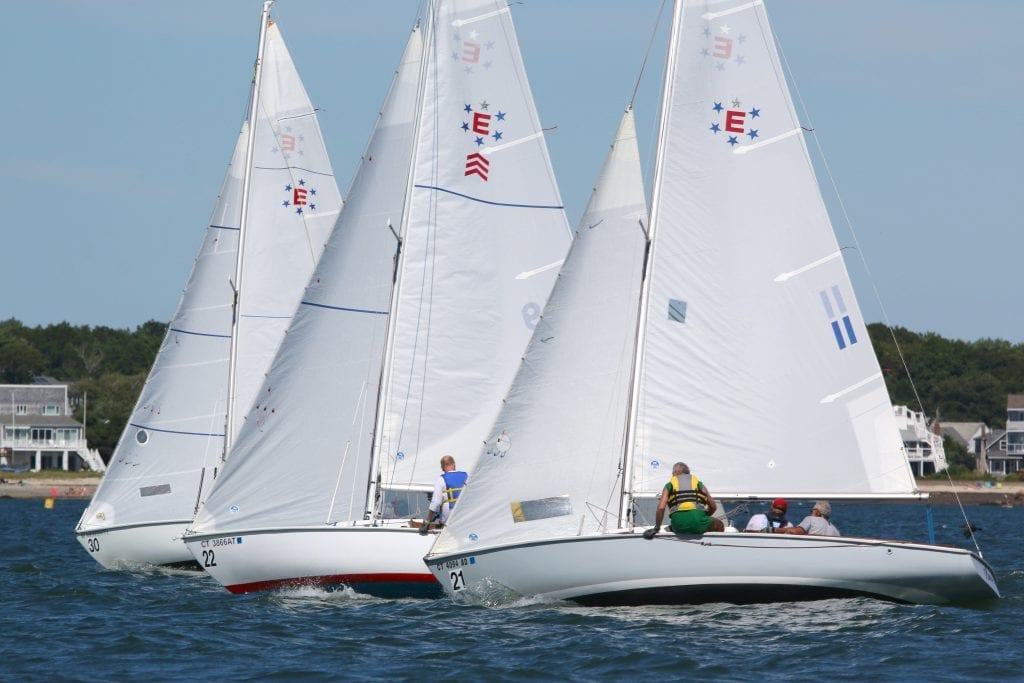
Photo Credit: Chris Kogut
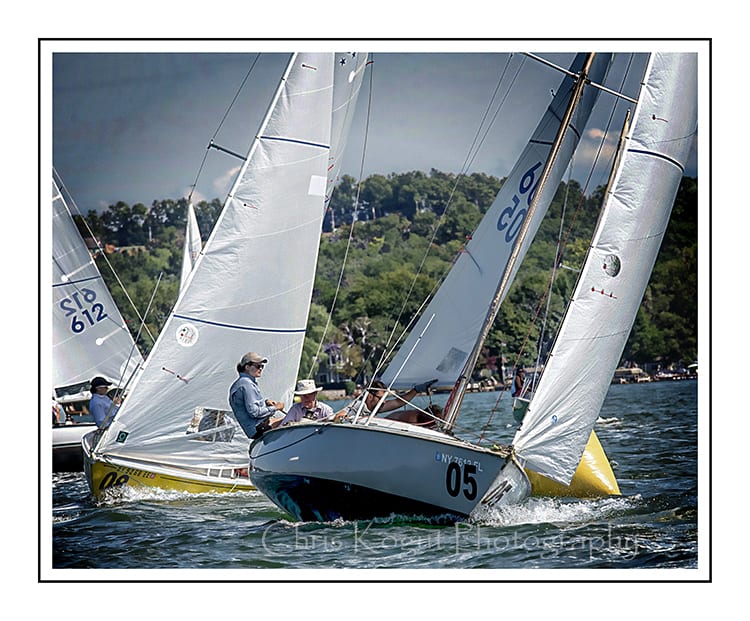
Photo Credit: Spectrum Photo/Fran Grenon
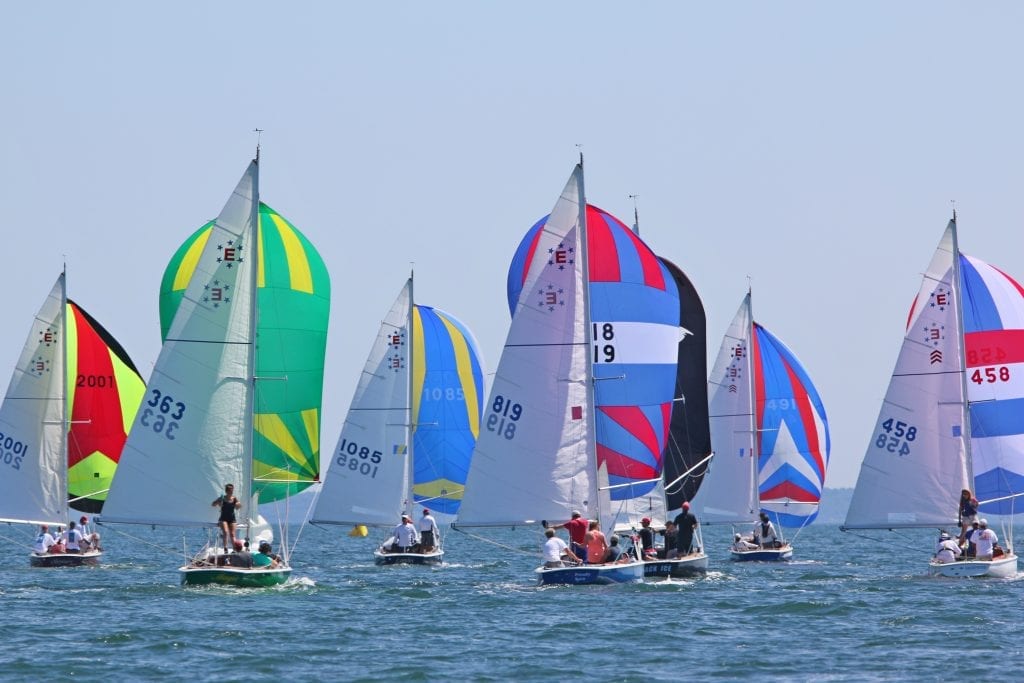
About Ensign Class Association
The Ensign is the largest class of full keel sailboats in North America, with over 2000 boats manufactured since 1962. Designed by Carl Alberg, its sustained popularity is due to very solid and durable construction, and a design that lends itself equally and admirably to comfortable family cruising, enjoyable day sailing, and close, strategic, tactical racing. The Ensign Class is one of the strongest national organizations, with numerous local fleets from coast to coast.
As a family day sailor, the Ensign has a large, deep cockpit, with enough room to comfortably seat six to eight adults. Its full keel provides a secure, stable ride, and its three foot draft makes it perfect for the shallower waters of bays and lakes and for anchoring fairly close to a protected shore. The cabin space is more than adequate for keeping lots of gear dry and can shelter two in a storm.
As a day sailor, the Ensign is a really enjoyable performer. The helm has a nice feel on all points of sail, and the boat has a versatile head sail inventory, including a working jib, a blade, #2 and #1 genoas, and a spinnaker. Single-handing is easy and exhilarating with the main and blade combination, especially if one includes the optional cabin top winches. For even easier head sail handling, it can be equipped with a roller furler.
The Ensign is 22 and 1/2 feet long, weighs about 3,000 pounds, and is best raced with a crew of four. Favored by former dinghy sailors and cruisers alike, it has no life lines and therefore many dinghy techniques (hiking, roll tacking, etc) can be used effectively. Racing is very close, strategic and tactical, with older boats performing just as well as the newer ones. This year’s national champion was built in 1964, and last year’s champion was built in 1966… testimony to the solid construction and durable design of the boat. The Ensign Class Association promotes and develops one design racing under uniform class rules, and rigidly maintains the one design features of the Ensign. New Ensigns continue to be manufactured by Ensign Spars, Inc., in Marquette, Michigan, using the original molds purchased from Pearson Yachts.
Boats Produced: 2000
Class boat builder(s):
http://ensignspars.com/
Approximately how many boats are in the USA/North America? 2000
Where is your One-Design class typically sailed in the USA? List regions of the country:
Coastal waters from New England to Mid Atlantic states Gulf Coast Great Lakes Inland Lakes throughout the US
Does this class have a spinnaker or gennaker? Yes
How many people sail as a crew including the helm? 3 to 4 for racing. 2 for cruising.
Ideal combined weight of range of crew: not established
Portsmouth Yardstick Rating: 95.70
Boat Designed in 1962
Length (feet/inches): 22’6″
Beam: 7′
Weight of rigged boat without sails: 2800-3000 lbs
Draft: 3′
Mast Height: 32′
Tuning Guides
Back to One-Design Central
Copyright ©2018-2024 United States Sailing Association. All rights reserved. US Sailing is a 501(c)3 organization. Website designed & developed by Design Principles, Inc. -->

Ensign - Pearson / STW003633

cabin cruiser
cruising/regatta
overall length
hull length
waterline length
standard draft
minimum draft
displacement
diesel tank
mast height
Accomodation layouts
standard version
DOCUMENTS: Ensign

If you find some wrong or lacking data of this boat, you can propose an update.
Technical forum: ensign, note: you will be redirected to another website., support the ultimate sailboat database.
The contents on this website, which today you can simply consult and use, have been collected, organized and archived by people who worked and invested in this project with passion and dedication for many years.
Before proceeding to browse, support our archive with a small donation that will allow us to maintain and improve this project.
proceed, I will donate next time
To proceed, you need to sign-in

History of the Ensign Class
Ensign class sponsors.

Cruising version of the Pearson Ensign

22' 3" 22' 6" 16' 9" 3' 0" 29' 9"
outboard 3 to 6 hp 40%
Carl Alberg Pearson Yachts 1960-1965 227 sq. ft. portable portable
Min./max. draft: Bridge clearance: Power: B/D ratio:
Designer: Builder:
Years produced: Sail area: Fuel tankage: Water tankage:
Approx. trailering wgt.: 4,600 lbs.
This early fiberglass Alberg design was introduced the year after the ground-breaking 29-foot Pearson Triton hit the ways in 1959, and was one of the very first small fiberglass cruising sailboats. In those days the marketers weren't always sure what the market would bear, so the Electra at first was sold as a basic two-berth overnighter, with extra-cost options that would make her a full-fledged cruiser (forward berths, galley, icebox, toilet, etc.). The Pearson Ensign 22 (page 191), a weekend version using the same hull but featuring a larger cockpit and smaller cabin, followed in 1962, and turned out to be much more popular than the Electra. Best features: The Electra, being a near clone of the Ensign, has many of the same stats, which make her relatively fast for her day (though definitely not faster relative to more recent designs). Some say she is better looking than many of the cruisers in her size range. Worst features: Compared to the Hunter 22, her comp other than the Ensign, she generally has less headroom. Her draft is deep enough for casual racing, but wouldn't stand up to many deeper-draft keelboats or shallower boats with centerboards (unless her extremely high PHRF rating could be brought to bear).
Continue reading here: Overnighter version of the Pearson Electra
Was this article helpful?
Related Posts
- Early and smallest Pearson racercruiser
- LOD and LOA - Cruising Sailboats Reference
- One Hundred Choices for the Best Small Cruiser
- Average PHRF Rating - Cruising Sailboats Reference
Readers' Questions
Can a pearson 22 ensign go in the water on a trailor or does it need a lift to get in the water?
A Pearson 22 Ensign can be launched from a trailer, but it would be beneficial to have a lift to help lower it into the water.
What type off hull is on my ensign cruiser?
The type of hull on an Ensign Cruiser is typically a deep V-hull. This type of hull is designed for improved stability and performance in rough water.
Where would i find the serial number on my peirson ensign sailboat?
The serial number should be located on the aft side of the boat on the starboard side. Look for a label, sticker or stamp engraved in the fiberglass. It may be on the transom or just forward of the transom. It may also be stamped in a bulkhead or on the hull bottom near the centerline. It should be in the range of 9-15 digits.
× You are using an outdated browser. Please upgrade your browser to improve your experience.
We Ship Worldwide! | FREE SHIPPING! for US Continental orders over $99. Click for details.

Shopping Cart
Your cart is currently empty..
FREE SHIPPING! for US Continental orders over $99 click for details
Ensign (Pearson) - Sailboat Data, Parts & Rigging

Sailboat data, rig dimensions and recommended sail areas for Ensign (Pearson) sailboat. Tech info about rigging, halyards, sheets, mainsail covers and more.
Sailboat Data directory for over 8,000 sailboat designs and manufacturers. Direct access to halyards lengths, recommended sail areas, mainsail cover styles, standing rigging fittings, and lots more for all cruising and racing sailboats.
MAURIPRO Sailing offers a full range of sailboat and sailing information to help you find the correct sailboat part, one that properly would fit your sailboat and sailing style. Our sailor's and sailboat owner support team are ready to talk with you about your specific sailing needs, coming regatta, or next sailing adventure.
From all at MAURIPRO, let's Go Sailing!
Copyright © 2024 MAURIPRO Sailing LLC.
ENSIGN (PEARSON) Detailed Review
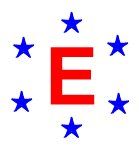
If you are a boat enthusiast looking to get more information on specs, built, make, etc. of different boats, then here is a complete review of ENSIGN (PEARSON). Built by Pearson Yachts and designed by Carl Alberg, the boat was first built in 1962. It has a hull type of Full Keel and LOA is 6.86. Its sail area/displacement ratio 18.12. Its auxiliary power tank, manufactured by undefined, runs on undefined.
ENSIGN (PEARSON) has retained its value as a result of superior building, a solid reputation, and a devoted owner base. Read on to find out more about ENSIGN (PEARSON) and decide if it is a fit for your boating needs.
Boat Information
Boat specifications, sail boat calculation, rig and sail specs, accomodations, contributions, who designed the ensign (pearson).
ENSIGN (PEARSON) was designed by Carl Alberg.
Who builds ENSIGN (PEARSON)?
ENSIGN (PEARSON) is built by Pearson Yachts.
When was ENSIGN (PEARSON) first built?
ENSIGN (PEARSON) was first built in 1962.
How long is ENSIGN (PEARSON)?
ENSIGN (PEARSON) is 5.11 m in length.
What is mast height on ENSIGN (PEARSON)?
ENSIGN (PEARSON) has a mast height of 7.75 m.
Member Boats at HarborMoor
Want to Sail Your Ensign Faster? Try These Tips.
Ensign Clinic – Newport Regatta – July 2015
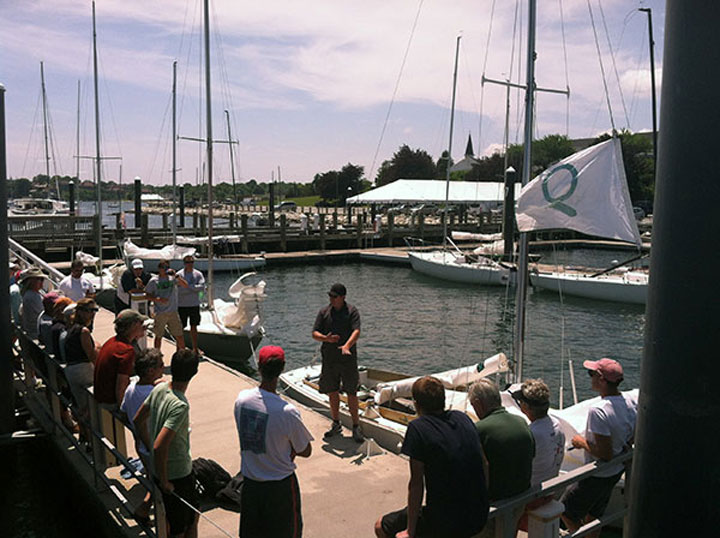
In case you missed it, here are a few key points we discussed for making your Ensign sail faster.
Having the right equipment can only take you so far – you need to know how to use your equipment to make the most of every regatta. Earlier this month, Allan Terhune, Randy Shore, and I held a one-day Ensign clinic at the Newport Regatta to share our best tips for getting the most out of your Ensign. Clinics are great for everyone – it’s an excellent way to have an open discussion about optimizing the boats, and a great way for me to learn how to teach better through open dialogue.
1. Rig Tuning: Setting up mast butt location and forestay length is critical to mast tuning. Center the rig in the boat by using the genoa halyard and taking side-to-side measurements to the toe rail. Once the rig is centered, tighten the upper and forward lower shrouds by putting on equal turns on each side while continuing to make sure the mast tip is centered and in column. Do this by sighting up the mast.
2. Sail Trimming: Remember that there is trim for speed (power), for VMG (close hauled), and for point (pinching). Find the balance for these and when they should be used.
- Power – Use this trim at starts, after tacks, through chop, and to clear your air (don’t be afraid to ease the genoa).
- Close hauled – Use this trim when you’re up to speed and all’s right with the world. You’ll make your best gains upwind when staring at your telltales and sailing your highest point of sail while maintaining boat speed.
- Pinching – Use this trim to make a mark, or when coming up on a windward boat to force it over.
3. Genoa: The genoa controls this boat (the mainsail is along for the ride). Your genoa trimmer should be in constant communication with the helmsman. Before the starts, the genoa trimmer should be staring at the telltales and trimming the genoa for speed at all times, unless the skipper tells you to dump speed/slow down. Some geona tips include:
- When a lift comes – Ease the genoa to the lift for extra power. You can react to the lift more quickly with the genoa than the helmsman can steer the boat up to it, so take the extra power and tell your skipper to come up to the lift (trim back in with him as he does).
- Opposite for a header – Trim the genoa in hard against the spreader tip and tell your skipper to come down, then ease the genoa back to close hauled position.
- Backwind the genoa at tacks – This helps turn the boat and will help pull the genoa through the fore triangle, allowing you to trim it in more quickly on the new tack.
- After the tack – Look at the telltales and get your genoa pulling ASAP. Get to that power mode (6-8” off spreader tip) - get your boat moving and up to speed. Talk to your skipper and tell him where you are on the spreader or if he should come up or down to get to that power mode. As speed builds, start trimming back to close hauled.
- Through all of this – The mainsail trimmer should do whatever the genoa trimmer does. When the genoa is eased, ease the mainsail. After tack, before starts, through chop – the mainsail trimmer should copy the genoa trimmer. Your goal through all of this is to keep the boat moving as fast as possible at all times.
4. Crew weight: Keep the boat flat whenever possible. In light air and chop, a little heel is good. Windward heel can be good downwind in light air, but in anything over 8 knots, keep the boat flat. More heel after tacks is good to help fill the sails and bring the boat up to speed. As sails are trimmed in to close hauled, flatten the boat. Start implementing some of these techniques and see if they don’t improve your results at your next regatta.
Happy sailing!
Learn more about Quantum Ensign sails .
Doug Burtner, Quantum Sails Rochester 1461 Hudson Ave Rochester NY 14621 585-342-5200 [email protected]
The Discussion

Us, too. We pour that passion into each of our newsletters to help you enjoy sailing even more.

Item added to your cart
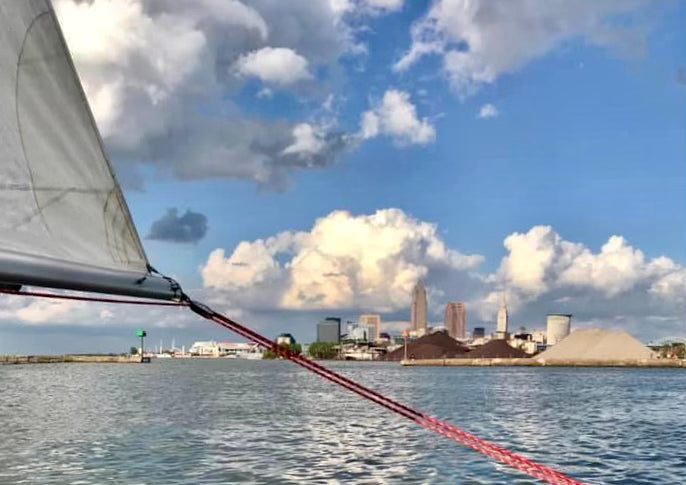
Browse our products
Welcome to ensign spars .
We're excited to bring you the Ensign-specific and general parts you need for your boat. Use the navigation menu to find all of our available products.
For questions on repairs and general tips on taking care of your Ensign, please check out the Ensign Class Association forum! It has lively conversations from dedicated members across the country. A wealth of information can be found on the forum.
Featured Products:
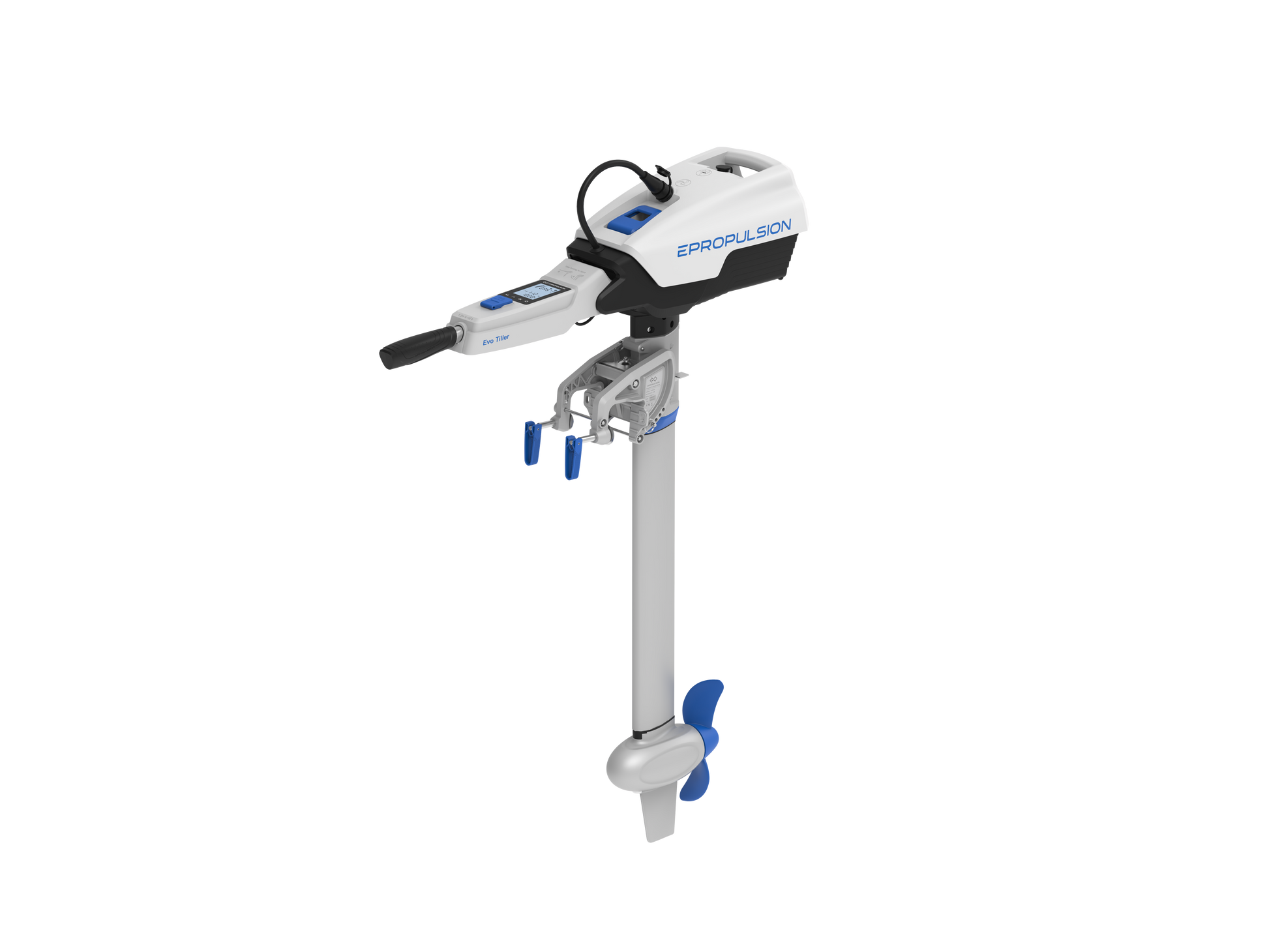
Ensign Spars
Spirit 1.0 Evo 3HP 1kW Electric Outboard Motor

Spirit 1.0 Plus 3HP 1kW Electric Outboard Motor
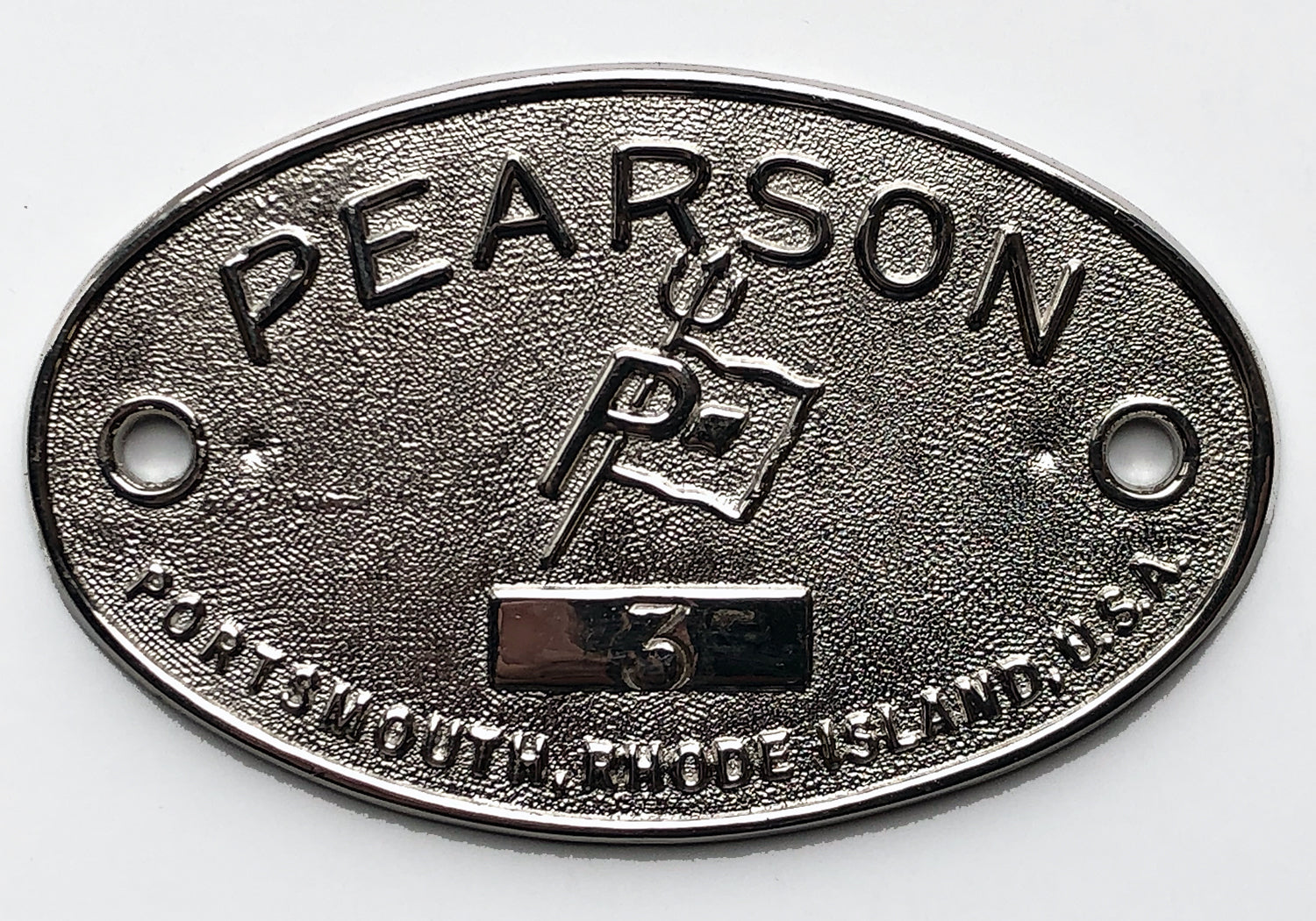
Pearson Builder's Plate
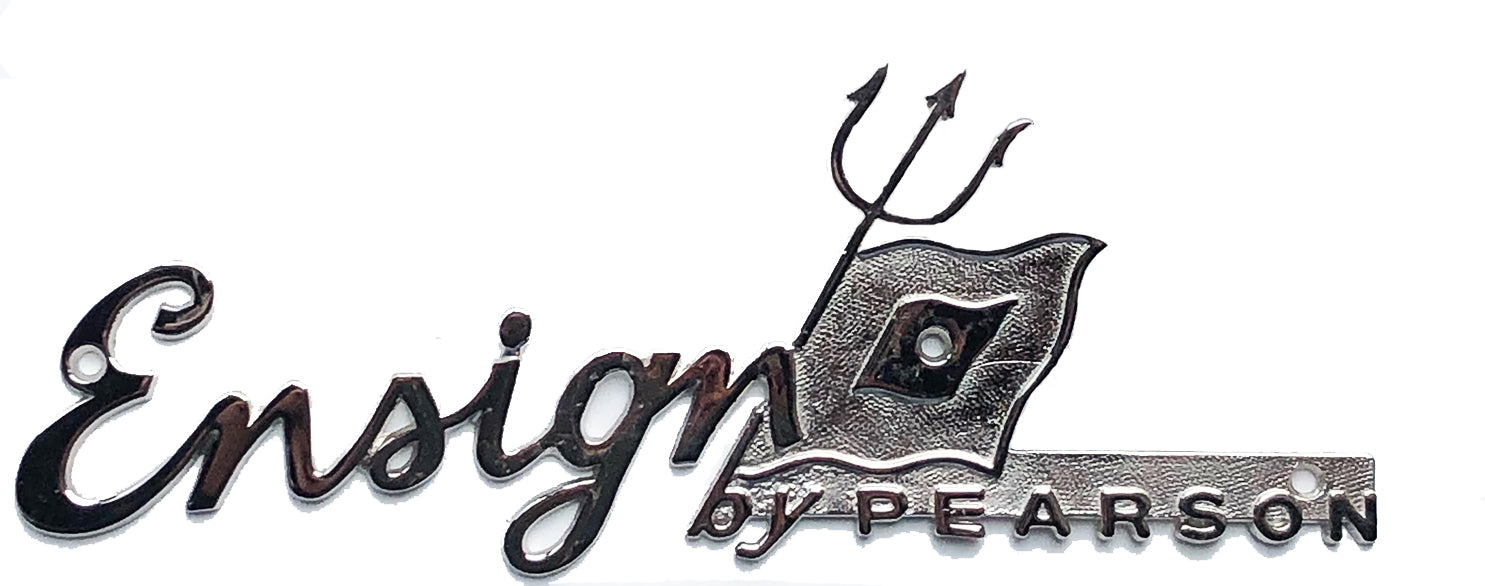
Ensign Coaming Logos
- Choosing a selection results in a full page refresh.
- Opens in a new window.
5 Fitzpatrick Way, PO Box 796, Hull, MA 02045 (781) 925-9739
Click here for 2024 Employment Opportunities

Item added to your cart
Ensign fleet #3 - fleet captain-gene manning.

The Pearson Ensign, or Ensign 22, is an American trailerable sailboat that was designed by Carl Alberg as a one-design racer and day sailer and first built in 1962. It is the largest full-keel one-design keelboat class in the Unitied States.
Summer Schedule Coming Soon!
Want to know more about the Ensign fleet? Contact Gene Manning @ [email protected]
- Choosing a selection results in a full page refresh.

IMAGES
VIDEO
COMMENTS
In 1959 Carl Alberg was commissioned by Pearson Yachts to design a 22-foot cruiser suitable for racing in the Midget Ocean Racing Club (MORC). This was the ELECTRA, which had a masthead rig, a small, self-bailing cockpit, and a cabin with galley space, head and bunks. About 350 ELECTRAS were built over the next six years.
The Pearson Ensign, or Ensign 22, is an American trailerable sailboat that was designed by Carl Alberg as a one-design racer and day sailer and first built in 1962. It is the largest full-keel one-design keelboat class in the United States.. The Ensign is a development of the Pearson Electra.
Pearson Ensign is a 22′ 6″ / 6.9 m monohull sailboat designed by Carl Alberg and built by Pearson Yachts between 1962 and 1982. ... The lower a boat's ratio is, the less power it takes to drive the boat to its nominal hull speed or beyond. Read more. Formula. D/L = (D ÷ 2240) ÷ (0.01 x LWL)³ D: Displacement of the boat in pounds. LWL ...
The Ensign pearson is a 22.5ft fractional sloop designed by Carl Alberg and built in fiberglass by Pearson Yachts between 1962 and 1982. 1776 units have been built. The Ensign pearson is a moderate weight sailboat which is a good performer. It is very stable / stiff and has a good righting capability if capsized. It is best suited as a day-boat.
Pearson Yachts was the only builder of the boat from 1962-1983 with 1775 boats constructed before ceasing production. Production was resumed in 2001 by Ensign Spars, Inc. of Dunedin Florida, where reportedly another 33 boats, (hull #2000 and above), have been produced as of 2019. Consider this: The Ensign is the only sailboat from Pearson ...
The technical storage or access that is used exclusively for anonymous statistical purposes. Without a subpoena, voluntary compliance on the part of your Internet Service Provider, or additional records from a third party, information stored or retrieved for this purpose alone cannot usually be used to identify you.
The Ensign is the largest class of full keel sailboats in North America, with over 2000 boats manufactured since 1962. Designed by Carl Alberg, its sustained popularity is due to very solid and durable construction, and a design that lends itself equally and admirably to comfortable family cruising, enjoyable day sailing, and close, strategic ...
The Ensign Class is one of the strongest national organizations, with numerous local fleets from coast to coast. As a family day sailor, the Ensign has a large, deep cockpit, with enough room to comfortably seat six to eight adults. Its full keel provides a secure, stable ride, and its three foot draft makes it perfect for the shallower waters ...
Sailboat Data ; Pearson Ensign Sail Data ; Pearson Ensign Sail Data. Pinit. SKU: X-SD-6355 . Quantity discounts available . Quantity Price; Quantity -+ Add to Cart . Details. Details. First Year 1962 Last Year 1985 LWL 16.8 Beam 7.0 Disp 3,000 Draft 3. # Built 1776 Ballast 1,200. You may also like.
The Ensign produced by the builder Pearson and designed by Carl Alberg, is a cabin cruiser for cruising/regatta, rigged Sloop ... read more on Sailing The Web, the ultimate sailboat database ... If you find some wrong or lacking data of this boat, you can propose an update. TECHNICAL FORUM: Ensign. Login to ask questions.
A brand new Ensign (Pearson sold 20 in 1981) can run upwards of $13,000 fully clipped for racing, and close to $17,000 if loaded with every last option. Ensigns have been good investments for their owners. And old boats win. Charles R. Sligh III, of Holland, Michigan, has twice won the Great Lakes Ensign Championship sailing Sea III, Ensign ...
Carl Alberg Pearson Yachts 1960-1965 227 sq. ft. portable portable. Approx. trailering wgt.: 4,600 lbs. This early fiberglass Alberg design was introduced the year after the ground-breaking 29-foot Pearson Triton hit the ways in 1959, and was one of the very first small fiberglass cruising sailboats. In those days the marketers weren't always ...
Sailboat Data directory for over 8,000 sailboat designs and manufacturers. Direct access to halyards lengths, recommended sail areas, mainsail cover styles, standing rigging fittings, and lots more for all cruising and racing sailboats. MAURIPRO Sailing offers a full range of sailboat and sailing information to help you find the correct ...
If you are a boat enthusiast looking to get more information on specs, built, make, etc. of different boats, then here is a complete review of ENSIGN (PEARSON). Built by Pearson Yachts and designed by Carl Alberg, the boat was first built in 1962. It has a hull type of Full Keel and LOA is 6.86. Its sail area/displacement ratio 18.12.
Center the rig in the boat by using the genoa halyard and taking side-to-side measurements to the toe rail. Once the rig is centered, tighten the upper and forward lower shrouds by putting on equal turns on each side while continuing to make sure the mast tip is centered and in column. ... Happy sailing! Learn more about Quantum Ensign sails ...
Pearson Ensign Specifications. LOA 22 ft 6 in. LWL 16 ft 9 in. Beam 7 ft (2.1 m) Hull weight 3,000 lb. Sail area (main & jib) 235 sq ft. The Ensign sailboat is the largest class of full keel boats in North America. In 1959, Pearson commissioned naval architect Carl Alberg to design a 22-foot (6.7 m) cruiser suitable for racing in the Midget ...
Pearson Yachts. Founded by cousins, Clinton and Everett Pearson. It was the 28' TRITON sailing auxiliary that put the company 'on the map'. Before this they had been using the newfangled fiberglass construction materials to build dinghies and small power boats. At the request of Tom Potter, who worked for American Boat Building, the Pearsons ...
Spirit 1.0 Evo 3HP 1kW Electric Outboard Motor. $3,129.00 USD. Style. Tiller Handle Top Mount Remote Control. Quantity. Add to cart. View full details. Ensign Spars.
Contact Gene Manning @ [email protected]. Ensign Fleet #3 - Fleet Captain-Gene Manning The Pearson Ensign, or Ensign 22, is an American trailerable sailboat that was designed by Carl Alberg as a one-design racer and day sailer and first built in 1962. It is the largest full-keel one-design keelboat class in the Unitied States. Summer ...
To provide the best experiences, we use technologies like cookies to store and/or access device information. Consenting to these technologies will allow us to process data such as browsing behavior or unique IDs on this site. Not consenting or withdrawing consent, may adversely affect certain features and functions.
Kelsall Sailing Performance (KSP): Another measure of relative speed potential of a boat. It takes into consideration "reported" sail area, displacement and length at waterline. The higher the number the faster speed prediction for the boat. A cat with a number 0.6 is likely to sail 6kts in 10kts wind, a cat with a number of 0.7 is likely ...